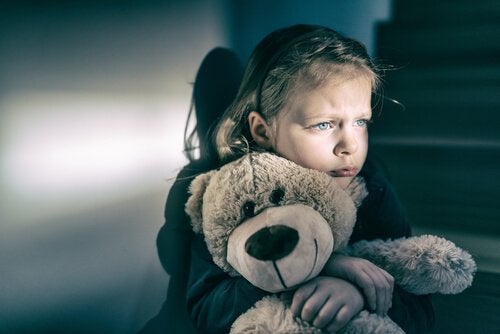When a child grows up in a context of inadequate care, or neglect, it is most common for him to react with social behaviors that do not suit those of society at large. development conditions of this kind.
Attachment is the main component of early childhood social and emotional development, it refers to the bond that the baby establishes with his primary parents or guardians, a link that will be a powerful reference for the rest of the relationships that the child will establish in childhood and in many cases, it will also be a reference for the relationships that will be established at any other stage until the end of the person’s life.
- Attachment theory offers a new perspective on the human development process.
- In this way we formulate and answer in this article some questions that can help us better answer these main questions: What is attachment and what does it serve in human growth?the negative effects of a poorly organized attachment?.
The essence of disorganized reactive attachment, or reactive attachment disorder (TRA), reminds us of childhood: when young children grow up with limited opportunities to create effective bonds, at some point they will be eliminated and inhibited, and they will not join anyone. Social abandonment, frequent changes in caregivers or deprivation? These are some of the risk conditions that can lead to the development of a disorganized reactive attachment or reactive attachment disorder (TRA).
These children are cold and rarely seek proximity to specific adults, even if they have unmet emotional needs. They may also feel irritated without explanation, or sad or frightened by the contact or proximity of their caregivers and family members.
“It is considered essential for mental health for a baby or toddler to experience an intimate, continuous and true relationship with their mother (or a pregnant party or a person who cares for that child in a stable manner), a relationship in which they both find satisfaction and pleasure?. – John Bowlby-
In the field of childhood study, one of the most interesting theories today is the theory of attachment, which allows us to better understand the complexity of the process by which we survive and integrate society, from ethology and psychoanalysis we already know that when a human baby is born, it needs adults willing to meet their vital needs as affection , care, food, hygiene, movement, etc.
What differentiates us from other species is that we innately learn by imitation. This process, of course, also involves a learning relationship. It is called in this context of humanization, that is, we call attachment to the need of the human being to create bonds of coexistence and love, establishing strong and lasting selective ties with their caregivers.
When attachment figures do not connect with the child, reference is made to the incompetence of the parents. The presence of severe parental incompetence in an adult may manifest as one or more of the following traits in the adult:
As a result of a development that occurs in this context of incompetent parental competences, an attachment is created that is not appropriate, yet the consequences will depend on several variables, among which we can include:
It is understandable that people who grow up in these conditions have abrupt, impulsive or difficult-to-understand behaviors, since they live relationships with great insecurity, low predictability and confidence, a lot of anxiety, in some cases the person suffers from a pathology, such as the aforementioned reactive attachment disorder (TRA), also known as disorganized reactive attachment. Faced with the great inconsistency and paradox of the situation in which “the person on whom I depend destroys my being”, I do not unscath.

